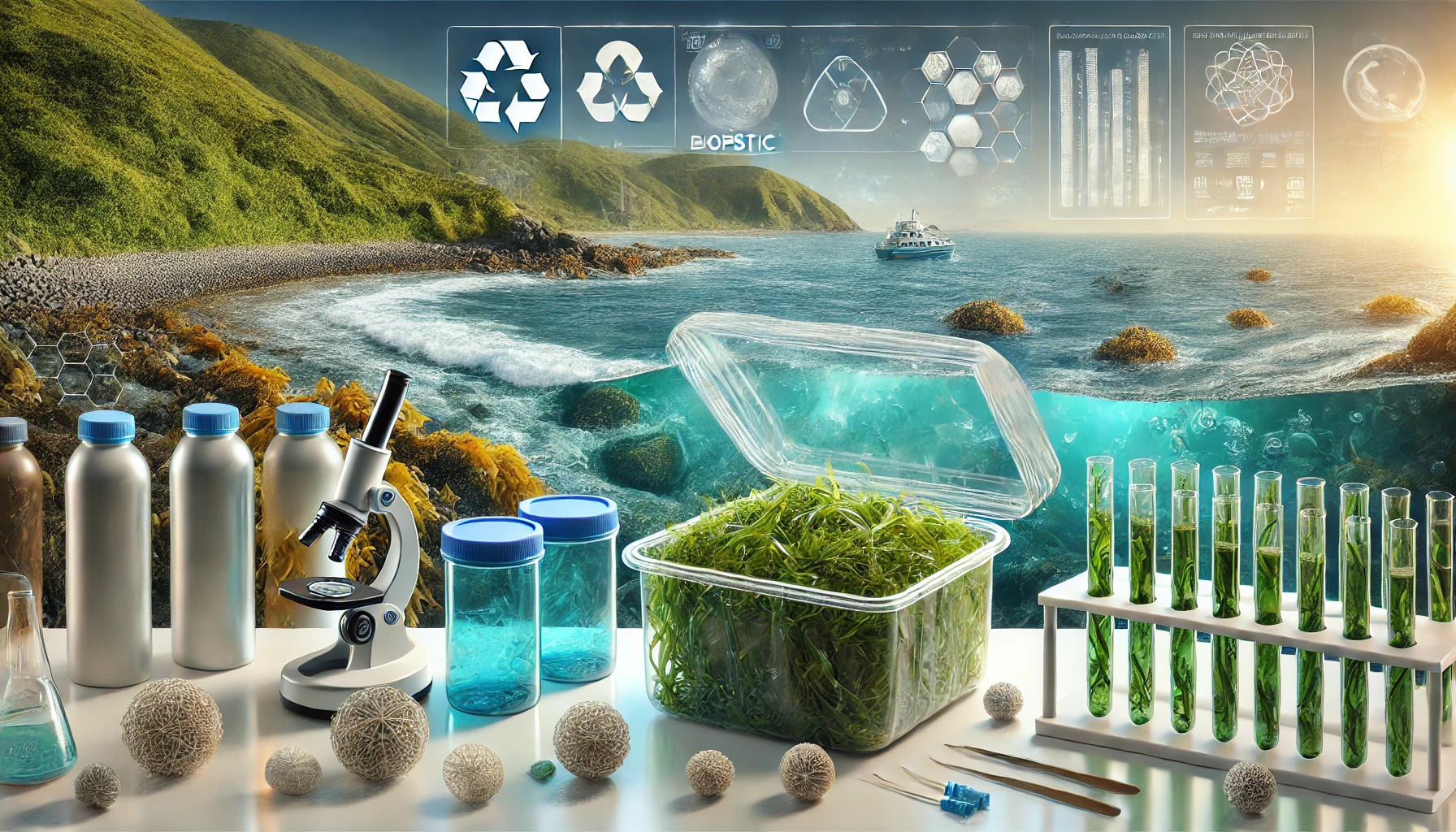Revolutionizing Waste Management with Biodegradable Plastics from Seaweed

The Seaweed Revolution: An Eco-Friendly Solution to Global Pollution
Imagine a world where plastics decompose in weeks rather than centuries. No more floating garbage patches, no more microplastics in the food chain. This dream is becoming a reality thanks to the rapid advancements in biodegradable plastics derived from seaweed. With the increasing awareness of environmental degradation, there has been a significant push toward finding sustainable alternatives to traditional plastics, and seaweed-based plastics have emerged as a promising contender. Not only is seaweed abundant and fast-growing, but it also does not require fresh water or fertilizers, making it a highly sustainable resource.
How Seaweed-Based Plastics Work: Breaking Down the Science
Now, let's dive into the science without drowning in the details. Seaweed, specifically red algae, is rich in polysaccharides—complex sugars that form the backbone of many natural substances. Researchers have discovered how to convert these polysaccharides into bioplastics by a process known as hydrogelation, which involves breaking down the seaweed into its molecular components and reforming them into a plastic-like material. Unlike petroleum-based plastics, which take hundreds of years to degrade, seaweed plastics can break down in just a few weeks under the right environmental conditions. Imagine throwing away a plastic cup today, and by the next season, it’s already returned to the earth, leaving no harmful trace.
The Global Impact: Reducing Ocean Pollution One Plastic at a Time
The implications of seaweed-based plastics are immense. According to a 2022 report by the United Nations Environment Programme, approximately 8 million tons of plastic end up in the oceans every year, contributing to massive environmental damage and threatening marine life. Biodegradable plastics derived from seaweed can drastically reduce this number. In fact, a study published in the journal Nature Sustainability found that replacing even 20% of current plastics with seaweed-based alternatives could decrease plastic waste by up to 6.5 million tons annually. The material not only reduces waste but also eliminates the harmful chemicals typically found in conventional plastics, such as bisphenol A (BPA) and phthalates, which are linked to various health issues.
Innovations Leading the Charge: From Startups to Major Corporations
Seaweed-based plastics are gaining traction, with several startups and even large corporations taking notice. Companies like Notpla and Loliware are pioneering this space, creating everything from biodegradable packaging to edible utensils. Notpla, a UK-based startup, recently developed a seaweed-based alternative to plastic packaging that completely decomposes within 30 days, while Loliware has created edible straws that can be composted or even eaten after use. These innovative companies are not only reducing plastic waste but also driving economic growth by tapping into the sustainable materials market, which is expected to reach $92 billion by 2027, according to Grand View Research.
The Challenges: Scaling and Consumer Adoption
Of course, like any new technology, seaweed-based plastics face challenges. One of the biggest hurdles is scalability. While seaweed grows quickly, harvesting and processing it into bioplastics on a large scale requires significant infrastructure and investment. Another challenge lies in consumer adoption. Despite the environmental benefits, biodegradable plastics tend to be more expensive than traditional plastics, which could slow down widespread usage. However, as with many green technologies, prices are expected to drop as production scales, making seaweed plastics more competitive with petroleum-based materials.
Future Potential: Could Seaweed Plastics Replace Traditional Plastics Entirely?
The big question is: can seaweed-based plastics completely replace traditional plastics? While it’s unlikely that seaweed plastics will dominate every market, they certainly have the potential to make a huge dent in industries like packaging, food service, and even fashion. With ongoing research and development, we could see new types of seaweed plastics that are even more durable, versatile, and cost-effective. Moreover, as governments around the world continue to implement stricter regulations on single-use plastics, the demand for sustainable alternatives will only increase.
Data-Driven Results: The Numbers Behind the Transformation
Let’s talk numbers. A recent study by McKinsey & Company estimates that the global production of biodegradable plastics could grow by 25% annually through 2030, driven largely by innovations like seaweed-based materials. Additionally, the report notes that widespread adoption of bioplastics could reduce the carbon footprint of plastic production by as much as 90%. In terms of cost, while seaweed plastics are currently 30-50% more expensive than conventional plastics, this gap is expected to shrink as production methods become more efficient.
Final Thoughts: A Greener Future with Seaweed Plastics
Seaweed-based plastics represent an exciting leap forward in the quest to reduce plastic waste and mitigate the environmental damage caused by traditional plastics. The science is sound, the innovations are promising, and the potential for global impact is immense. But like any technological revolution, the success of seaweed plastics will depend on our collective willingness to invest in and adopt these alternatives. Will we see a future where the oceans are free of plastic waste, replaced instead by materials that work in harmony with nature? The answer is within reach, but it’s up to us to make it a reality.
Engage with the Conversation: Your Thoughts?
What do you think about the future of biodegradable plastics from seaweed? Could they really transform waste management, or do you see other materials leading the charge? Let’s discuss in the comments or over on Reddit!



